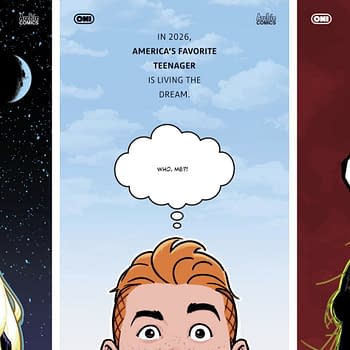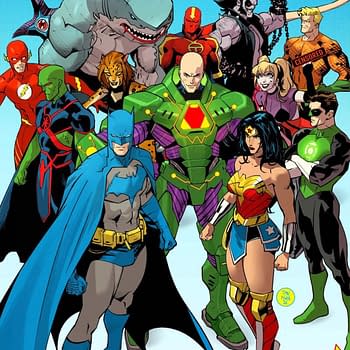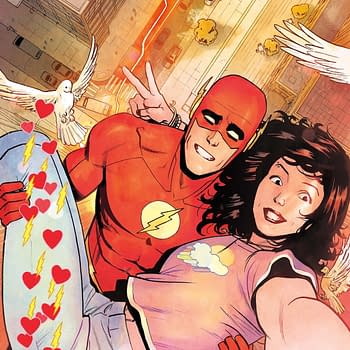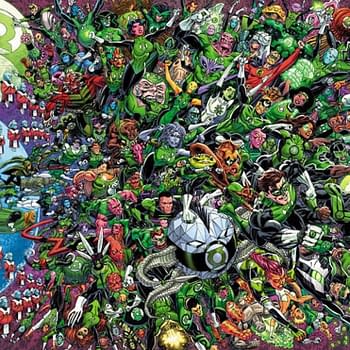Posted in: Comics | Tagged: Comics, dc, entertainment, gender, gendercrunching, marvel
Gendercrunching – November 2011 by Tim Hanley
Tim Hanley writes for Bleeding Cool.
November was a solid month for both publishers, and Marvel had the higher percentage of female creators for only the second time all year after a very close loss in October. Marvel's definitely stepped it up this autumn, while DC's remained fairly steady.
DC COMICS
While DC is up a smidge from October, the breakdowns by category are sort of disheartening, particularly in terms of the gigs that get your name on the cover. In November 2011, DC Comics released 82 new comics featuring 634 credited creators, 563 men and 71 women. Let's look at the charts:
DC was up 0.1% from October, which is lovely but hardly momentous. However, you might have noticed a lot of small numbers in the categories. Writers, pencillers, and inkers all fell by nearly two percentage points, to such a low level that they're damn near impossible to see. Colorists took a tumble too, and were down 4%. Editorial remained within a percentage point or so of their October totals, and cover artists saw a decent gain of nearly 2%. But there were letterers!! After two months without a female letterer, Saida Temofonte was on FOUR books in November, bringing in the highest percentage of female lettering we've seen all year.
MARVEL COMICS
Marvel had its best overall total of female creators so far this year in November, putting up some good numbers across the board too. In November 2011, Marvel published 87 new comics with 777 credited creators, 688 men and 89 women. Here are their charts:
The overall percentage of 11.5% is up half a percentage point from October, which is a very nice gain. More impressively, their creative totals are some of the highest we've seen all year, with strong gains from last month: cover artists up 2.4%, writers up 3.6%, pencillers up 4.1%, inkers up 6.2%. Colorists fell 0.1% and there were no letterers, as always at Marvel, but these totals in the first four categories are pretty huge compared to what we're used to seeing, and dwarf DC. However, editorial didn't have the best month. Full editors fell nearly a percentage point, while assistant editors were down a whopping 9 points.
FEMALE CHARACTERS AT DC COMICS
We usually talk about creators when we Gendercrunch, but I've gotten a few comments lately asking for a look at female characters. This seemed like a fun idea, so this month we'll check out DC and then we'll pop into Marvel in the near future (probably not next month… it's the December numbers, so that'll likely be a year in review sort of thing).
To sort out how to count characters, I settled on a fairly simple plan: I'd look at the covers. A comic book cover is meant to sell the book, to tease you about what's inside, and usually features the book's main characters, so it seemed like a decent indicator of who appears in the book. Apart from reading every single comic book and counting every single character who appeared, this was the best standardized way to get a sense of characters.
The rules were simple. I counted the characters on the cover. If they were male, they got counted as a male. Same with females getting counted as females. Robots, aliens, and other bizarre creatures without a clearly specified gender didn't get counted. Nor did animals, unless they were anthropomorphic (ie. no on Krypto, yes on Scooby-Doo). To even things out, all of the issues got a percentage and all of the percentages were then averaged. If I'd added all the issues together, an issue with 20 people on the cover would count for FAR more than an issue with 1 person. Doing individual percentages for each book made every book worth the same.
So that's how I got these numbers for the past autumn:
What a spectacularly boring chart. I mean, it's super impressive that the numbers are so close together. A difference of only 1.3% makes for some ridiculously good consistency. But it's not terribly exciting, visually.
Nonetheless, the percentage of female characters on DC's covers is noticeably better than their percentage of female characters. Overall, DC is usually in the 11% range, and this is more than double that. Plus, DC is just terrible with lady writers and artists, the jobs that get your name on the cover. There are WAY more female characters on their covers than female creators.
But dear lord, this chart is SO dull. Let's turn its dullness into a plus and build something more exciting. These numbers are remarkably consistent, so maybe we can look back at past years to see how the totals have changed over time, and be fairly confident that one monthly total is reasonably indicative of the months around it. We can't get too worked up about specifics, but we can definitely check for trends.
So seeing as we're doing the November numbers, I looked back at the past five years of female characters on the November covers of DC comic books:
Hey, numbers that are different!! This is way more fun.
The trends here are pretty obvious. Apart from a bit of a dip in 2009, the percentage of female characters on the covers of DC's comics has been increasing over the past five years. Until 2011, that is… November 2011 had the lowest total since 2006. Things were growing fairly steadily, but it looks like that's stopped.
Now, the differences we're talking about here aren't massive, but they aren't tiny either. There's nearly 7 percentage points difference between 2010 and 2011. If we get all percentage of a percentage about it, the amount of women on DC's covers has dropped by over 20% from a year ago. And from 2006 to now, there's been next to no net change at all.
We've seen this sort of stagnation at DC before, when we took a historical look at female creators. Over time, some things go up and some things go down, but ultimately nothing really changes. We've seen the number of female comic fans grow a lot over the past decade, and the DCnU relaunch was meant to attract more new readers, but female involvement in the comics themselves, be it characters or creators, hasn't really changed at all.
Furthermore, numbers don't paint the full picture. Not all of the women on DC's November 2011 covers were depicted in the most heroic fashion:
Women make up about a quarter of the characters on the covers, several of them are drawn like this, and there are a grand total of 4 books out of 82 that have a female writer or artist named. What message does this send to prospective female readers? It says "These books are not for you". Very loudly. It says that these are books by boys for boys. This is a problem for lots of reasons in terms of feminism and equality and creativity and all of those lovely things, but on the practical side it boils down to DC turning away a huge group of potential readers. At the end of the day, it's just bad business.
NOTES:
To learn more about this statistics project and its methodology click here, and to see the previous stats click here.
You can visit Tim at Straitened Circumstances and follow him on Twitter @timhanley01.

















